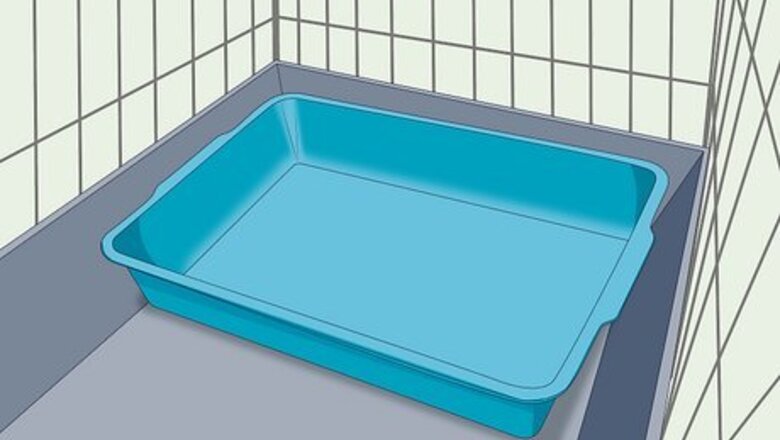
views
- Use a shallow litter box filled with a dust-free unscented litter, like recycled paper pellets or compressed wood pellets.
- Put your ferret in their litter box right after they wake up or eat. Reward them with a treat every time they go potty.
- Lead your ferret to their litter every 3–4 hours to go potty.
- Keep a litter box in every room where you let your ferret out so they’re never far if they need to go.
Litter Box Setup

Place a shallow litter box in the corner of your ferret’s cage. Get a litter box that’s about 3–4 inches (7.6–10.2 cm) tall and large enough for your ferret to fit all 4 of its paws inside. Try to get a box specifically made for ferrets since ones that are made for larger animals might be too tall for your ferret to get inside. Secure the litter box to the cage with a bungee cord so your ferret doesn’t flip it over if they start digging. You can get standard tray litter boxes, or get a corner litter box that easily tucks into the corner of a room or cage. Put a litter box in any room where you play with your ferret since they might not make it all the way back to their cage when they need to go.
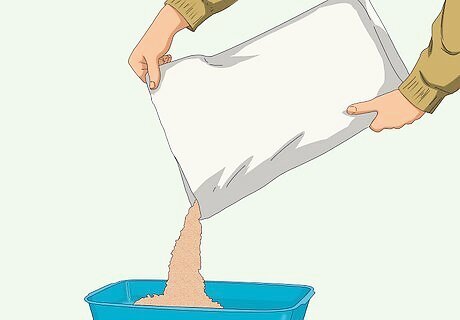
Fill the box with dust-free unscented litter. Stick to using recycled paper pellets or compressed wood pellets since they’ll help absorb odors the best. Avoid any clay or clumping cat litter since they’re too dusty and could damage your ferret’s respiratory system. Cedar and pine shavings can also irritate your furry friend’s nose and lungs, so steer clear of them as well. You can also line around the outside of the litter box with piddle pads to prevent messes if your ferret likes to dig in their box.
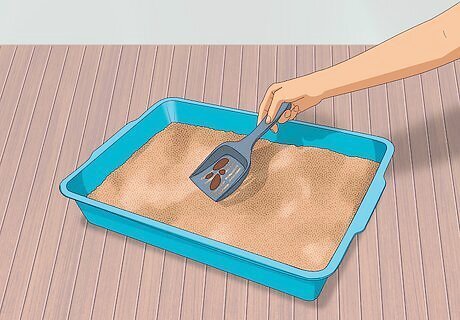
Place some of your ferret’s droppings inside the litter box. Some ferrets may try to dig or sleep in an empty litter box. To help your ferret remember that their box is a toilet and not a play area, collect some of your ferret’s droppings and set them on top of the litter. The scent of your ferret’s droppings will also help remind them to visit their litter box any time they need to go to the bathroom.
Litter Training Your Ferret
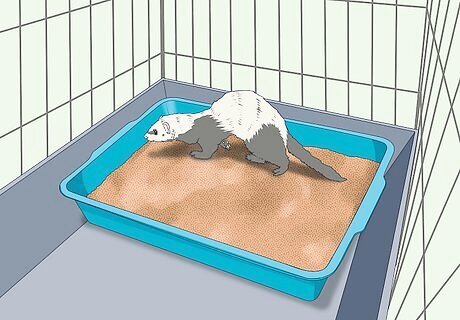
Set your ferret in their box as soon as they wake up or eat. Ferrets usually go to the bathroom within 15 minutes of waking up from a nap or eating a meal. Pick up your ferret and put them inside the litter box. Keep your ferret in their cage until you see them go potty in the box. As you first start litter training your ferret, avoid letting them out of their cage to play right away so they don’t have any accidents. After they go to the bathroom, you can let them out as long as you supervise them.
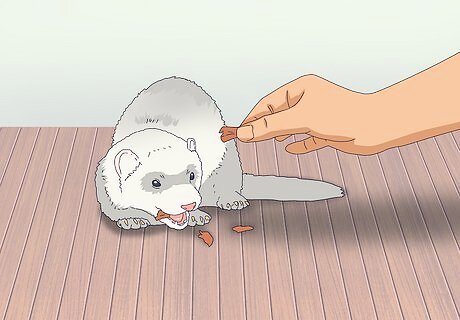
Reward your ferret with a treat when they finish going to the bathroom. Use positive reinforcement with your ferret by giving them some pets and verbal praise once they go. Give your ferret a treat so they associate going potty in the litter with getting a tasty snack. As long as you continue rewarding your ferret, it’ll learn that going in the litter box faster. Ferrets are pretty intelligent, so they may pretend to go potty just to get a treat. Make sure your ferret has actually done their business before rewarding them.

Guide your ferret to their litter box every 3–4 hours. Ferrets have a short digestive system, so they need to go potty frequently throughout the day. Keep track of the time since your ferret last went in their litter box and supervise them when you’re letting them out of the cage. If your ferret starts backing up towards a corner of the room, move them to a litter box instead. If you’re worried about your ferret having an accident, limit their time outside of the cage to 1–2 hours.

Give your ferret more space to roam once they use litter consistently. As long as you’re consistently rewarding your ferret each time they use their litter, it’ll only take about a week to train. Once they start using their box consistently, let them roam around outside their cage with an extra litter box in the corner of the room. Supervise your ferret and guide them to the new box if they ever need to go.
How to Stop Your Ferret From Going Outside the Litter Box
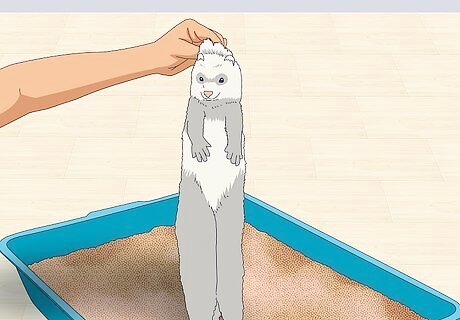
Move your ferret to their box if you catch them going potty. If you see your ferret backing into a corner of its cage or room, it’s usually a sign that they’re about to go potty. Pick up your ferret and quickly move them to one of their litter boxes to do their business. Ferrets are bound to have accidents when you first start training them. Never punish or scold your ferret since they might become afraid of you.
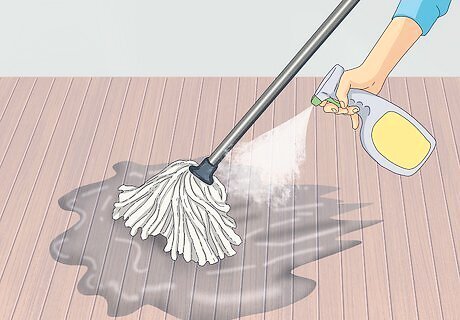
Clean any accidents outside the box with an enzymatic cleaner. Enzymatic cleaners are effective at completely eliminating potty odors so your ferret doesn’t go there again. Try to clean up the stain as soon as you can to prevent the odors from setting in. Spray the enzymatic cleaner on the spot where your ferret had an accident, and let it soak in so it completely kills the bacteria and bad odors. You can scoop any accidents and place them in the litter box. When your ferret picks up the scent, they’re more likely to go potty there.

Put food and bedding in the other corners of the cage. Ferrets will naturally avoid going potty in the same places where they eat or sleep. Try placing blankets on the opposite side of the cage as the litter box. Then, put a food dish and water bottle in the other corners to help direct your ferret to the right spot.

Reposition litter boxes where your ferret prefers to go. Ferrets may choose certain spots in their cage or a room as a designated potty area even if there isn’t a box there. If your ferret keeps returning to the same spots to do their business, just try putting their litter boxes there after you clean up.
How often should you clean your ferret’s litter box?
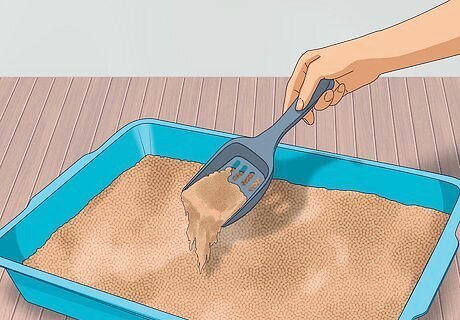
Scoop your ferret’s litter box every 1–2 days. Your ferret may stop using their litter box if it gets too full. Check the box every day and use a litter scoop to pick up any waste. Just be sure to leave some droppings in the litter box to keep your furry friend from digging or playing in it. Change your ferret’s litter completely at least once a week.


















Comments
0 comment